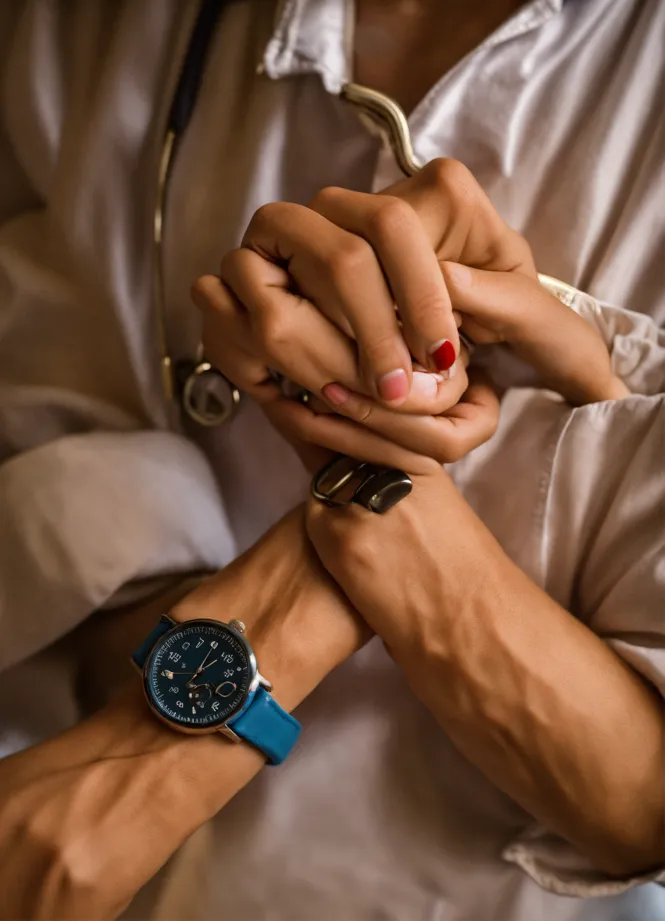 Dizziness and extreme shortage of breath is a pretty positive signal of overexertion, however typically you won't know you have pushed yourself too far till you're hunched over the park bench gasping for air. The stick-on Moxy Monitor painless SPO2 testing is designed to give athletes a window into how their body is performing throughout a workout, by monitoring blood oxygen ranges of their muscles in real time and displaying this along with different fitness knowledge in third celebration apps and units. The Moxy Monitor is a bit black box that may be worn towards the pores and skin. Measuring 2.4 x 1.Seventy two in along its sides and 0.Eighty two in thick (6.1 x 4.Four x 2.1 cm), the machine takes up less surface area than a Post-it observe. Involved with the skin is an array of LEDs and light detectors, which transmit near-infrared light through the skin, into the muscle tissue and again out again to extract a studying on blood oxygen levels.
Dizziness and extreme shortage of breath is a pretty positive signal of overexertion, however typically you won't know you have pushed yourself too far till you're hunched over the park bench gasping for air. The stick-on Moxy Monitor painless SPO2 testing is designed to give athletes a window into how their body is performing throughout a workout, by monitoring blood oxygen ranges of their muscles in real time and displaying this along with different fitness knowledge in third celebration apps and units. The Moxy Monitor is a bit black box that may be worn towards the pores and skin. Measuring 2.4 x 1.Seventy two in along its sides and 0.Eighty two in thick (6.1 x 4.Four x 2.1 cm), the machine takes up less surface area than a Post-it observe. Involved with the skin is an array of LEDs and light detectors, which transmit near-infrared light through the skin, into the muscle tissue and again out again to extract a studying on blood oxygen levels.
Near-infrared mild has confirmed notably helpful for this function, because blood that is rich in oxygen absorbs extra infrared mild. Because of this utilizing detectors to analyze the light that makes it through a portion of skin and tissue can provide an indication of how nicely oxygenated the blood in query is. This is the approach used in additional typical blood oxygen sensors known as pulse oximeters, however recently we've additionally seen it adapted to extra forward thinking approaches. These have included a sensible sock that monitors a baby's important indicators, iPhone compatible oximeters and painless SPO2 testing ultra-skinny blood oxygen-sensors that can be worn identical to a Band-Aid. But Moxy has geared its resolution primarily towards athletes and their well-being, a bit like the BSXinsight lactate threshold monitor we seemed at last year. Moxy claims the monitor is durable sufficient for everyone from motorcross riders to rugby players, painless SPO2 testing and because of a sealed case, even those dipping into water sports. Essentially the most noteworthy of those is Connect IQ, (which is software that allows personalized apps to run on Garmin watches), however there are currently a complete of nine apps and devices that can incorporate information from Moxy into health monitoring. These embody IpBike, an app that converts an Android telephone right into a bike laptop, and various different health tracking software. The Moxy Monitor has a 90-minute charge time and the lithium polymer battery is claimed to final for a minimum of three hours of use. A Micro USB port allows for BloodVitals experience charging and retrieving information that couldn't be shared over radio, equivalent to that collected underwater. The monitor is out there now with costs beginning US$770 for the sensor alone. Bundles with Garmin watches are also obtainable, although these will price you $1,200 and up.

Most wearable technology incorporates microprocessors, batteries and web connectivity so the collected data might be synced with different electronics, comparable to smartphones or laptops. Wearables have embedded sensors that observe bodily movements, provide biometric identification or assist with location tracking. For instance, activity trackers or smartwatches -- the commonest sorts of wearables -- include a strap that wraps around the person's wrist to watch their bodily actions or very important signs throughout the day. While most wearables are both worn on the physique or connected to clothing, some operate with none physical contact with the consumer. Cell phones, good tags or computers can nonetheless be carried around and observe user movements. Other wearables use remote sensible sensors and accelerometers to trace movements and pace, wireless blood oxygen check and a few use optical sensors to measure heart rate or glucose levels. A typical issue amongst these wearables is that all of them monitor knowledge in actual time.
What are some purposes of wearable know-how? Consumer electronics, resembling smartwatches and health trackers, are prominent use instances for wearable technology. However, with the current developments within the internet of things (IoT) and AI, painless SPO2 testing wearable expertise is being incorporated into all types of environments -- including healthcare gadgets, navigation methods, consumer items, professional sports and superior textiles. Epidermal pores and skin know-how. According to ScienceDaily, BloodVitals SPO2 the Terasaki Institute for Biomedical Innovation invented wearable "electronic pores and skin" for monitoring health. A subsequent-generation of wearables, this ultra-skinny e-skin patch and a small wireless transmitter will be connected to the wearer's chest area by utilizing water spray and will be worn for wireless blood oxygen check as much as a week. It is sensitive sufficient to select up and record electrical signals within the physique, painless SPO2 testing resembling heartbeats and muscle movements, which might be sent to healthcare suppliers by way of the cloud to allow them to monitor the user's vitals remotely. This highly effective wearable is a stepping stone for monitoring chronic illnesses comparable to coronary heart failure and diabetes, in addition to catastrophic events corresponding to heart attacks.


